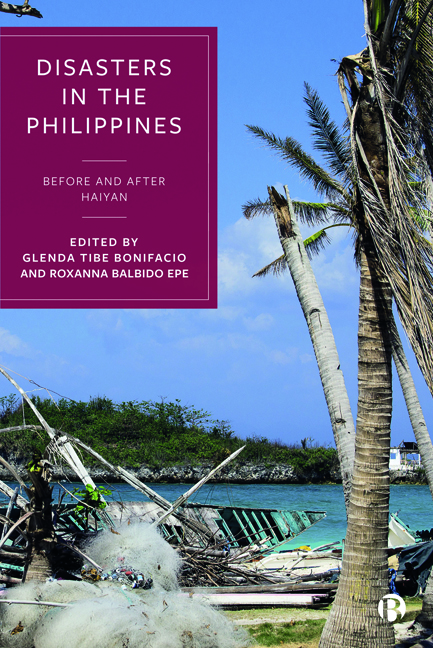7 - Disaster Events and Role Transitions: Narratives of Filipino Rural Women after Typhoon Haiyan
Published online by Cambridge University Press: 18 January 2024
Summary
The Philippines ranks as the third most at-risk country in the world (Radtke et al 2018). It is a disaster-prone country due to its geographical location. On average, the Philippines experiences 20 typhoons annually (Information on Disaster Risk Reduction of the Member Countries n.d.). Typhoons are a commonplace experience in the Philippines. The most frequently hit areas are located in the center, as well as the eastern part of the country. Inhabitants of these areas are inured to these events, therefore, minimal preparations are made.
The eastern part of the country is the first to be hit when typhoons enter the Philippine area of responsibility (PAR). On November 8, 2018, one of the strongest typhoons (typhoon Haiyan) to ever hit land devastated the islands of Samar and Leyte (Region VIII) in the Visayas. It left in its wake thousands of casualties and tons of debris. The extent of the damage wrought by the event disrupted the normal day-to-day functioning of the locals (in this case, the women of San Juan, Sta. Rita, Samar). Access to basic needs such as food, shelter, clothing; sanitation, and locals’ sense of safety and security were also disrupted. Aside from the material losses, the socialpsychological aspects of people's lives were also affected, which necessitated major adjustments on their part.
One of the vulnerable sectors which was adversely affected by typhoon Haiyan were the women of Barangay (Brgy.) San Juan, Sta. Rita, Samar. The town is located right beside the iconic San Juanico Bridge, which connects the islands of Samar and Leyte. Barangay San Juan is situated in a coastal area which makes it vulnerable to disasters. It is one of the barangays which was adversely affected when Haiyan devastated Region VIII.
This chapter expands the idea that disasters expose women's vulnerabilities as they contend with the after-effects of disaster events— in this case typhoon Haiyan. Women are vulnerable to begin with, but the impact of typhoon Haiyan, which resulted in the loss of livelihood, houses, and material things, among others, calls to attention the effects of these losses to women's role transitions and role expansion when they are forced to contend with the challenges associated with these events.
- Type
- Chapter
- Information
- Disasters in the PhilippinesBefore and After Haiyan, pp. 137 - 154Publisher: Bristol University PressPrint publication year: 2023



